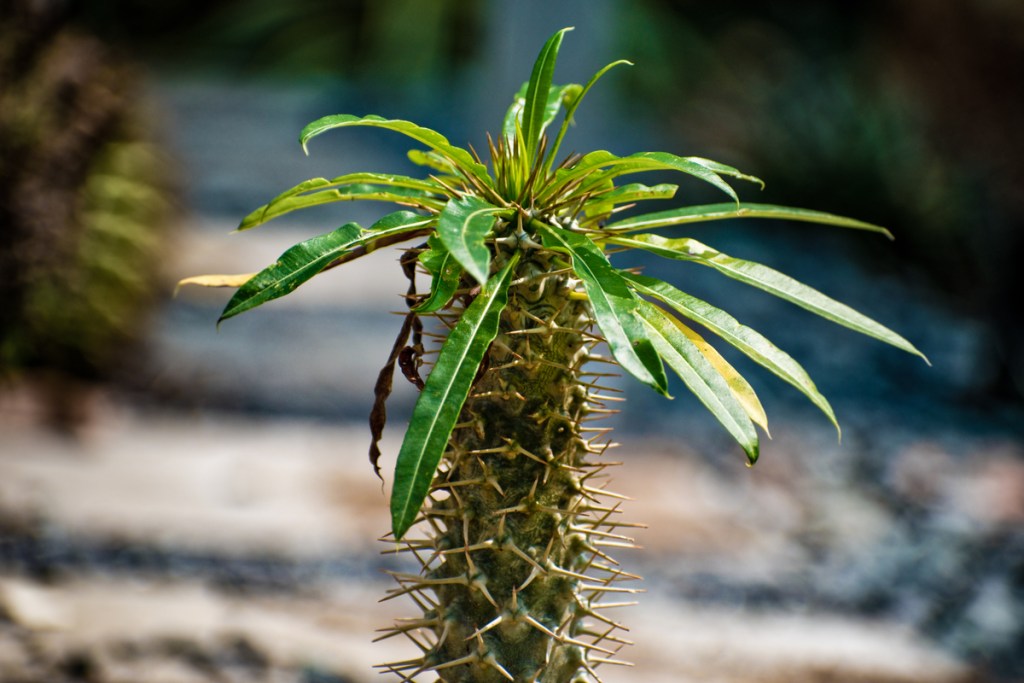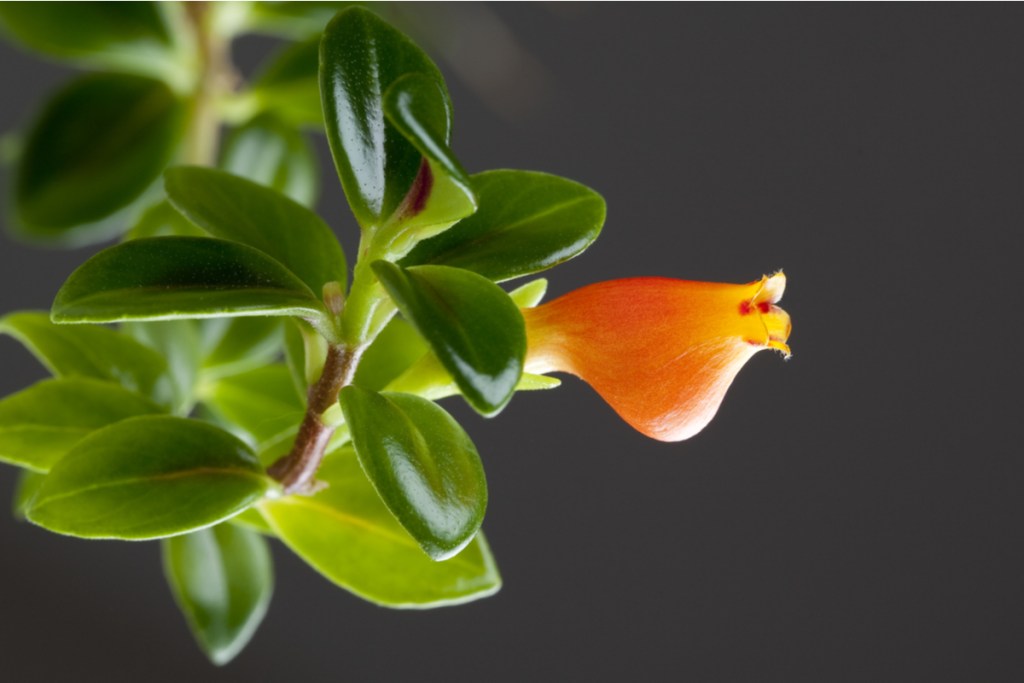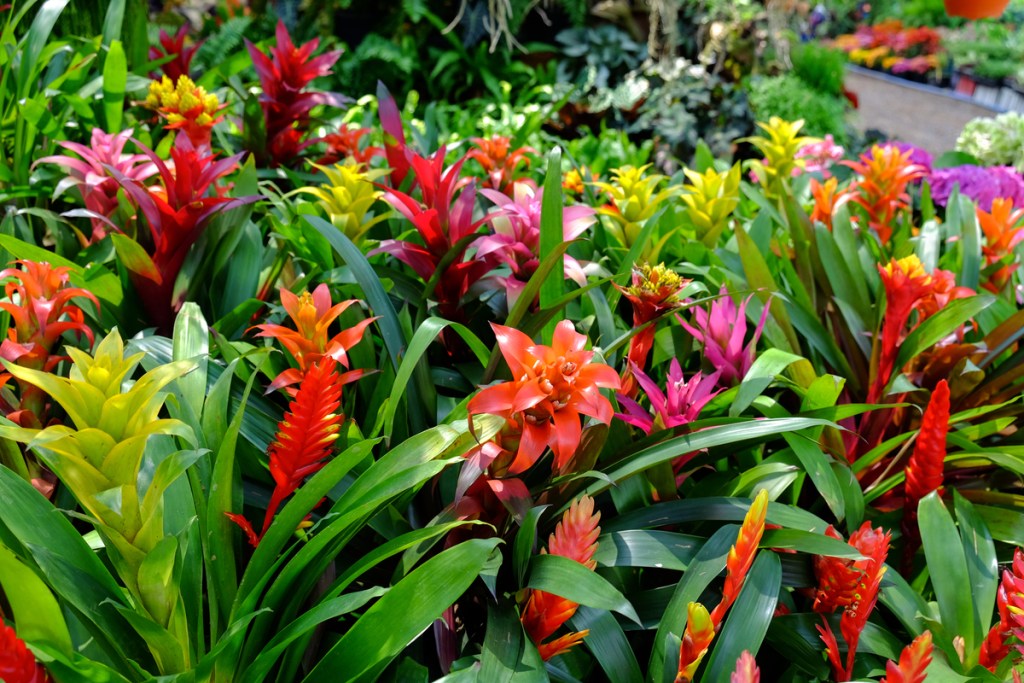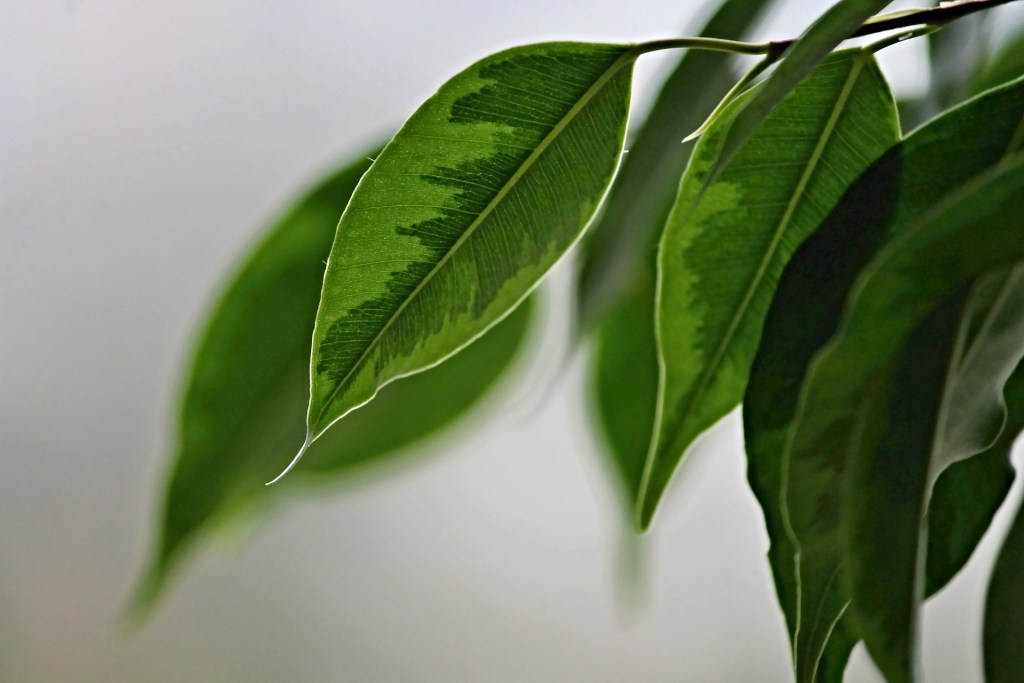Exotic houseplants have a reputation for being finicky —the general idea is that the more unusual they are, the less information there is on their care. But technically speaking, many common plants were at some point exotic houseplants, and not all are difficult to grow! If you’ve ever wanted a plant that’s a bit different from your everyday jade pothos, there are a myriad of low-maintenance exotic houseplants that you can add to your plant wishlist.
Ahead, we’ve rounded up the easiest exotic houseplants to maintain and break down how you can nourish them for prolific growth!

Madagascar palm
The Madagascar palm is really a flowering stem succulent, and as such, doesn’t have strict care requirements. Native to Madagascar (as its name implies), it features a spine-covered trunk with thick leaves and fragrant flowers at the top. In the winter, the blooms start developing, and they come in attractive colors such as yellow, pink, or red. If you keep it indoors, the Madagascar palm can grow up to six feet tall—outdoors, its height can range anywhere from 10 to 15 feet tall. As with all succulents, this hardy plant appreciates two main conditions: plenty of bright sunlight and well-draining soil. You may occasionally find the Madagascar palm at big-box and neighborhood nursery stores, but small container sizes are also available on Amazon, Etsy, and other online retailers.

Goldfish plant
Hailing from Central America, the goldfish plant, or nematanthus gregarious, is an easy-going, succulent-like plant with thick, glossy leaves and bright orange blooms that resemble its namesake. The goldfish plant enjoys bright indirect light and warm temperatures to push out leaves and develop flowers, but it appreciates shade during the hot months of summer. When the top inch of the soil feels dry, that’s when you know to water your goldfish plant. With this plant, you’ll want to keep an eye on your humidity levels to prevent wrinkly leaves—a humidifier or pebble tray can be quick fixes. It’s a relatively common plant to find at nurseries and big-box stores during the spring, although you’ll likely be able to find it online as well.

Bromeliad
Known for stunning orange, red, yellow, and pink inflorescences (or elongated flower spikes) that shoot out from its stemless rosette foliage, the bromeliad is an easy-care exotic houseplant. It comes from tropical North and South America, where it enjoys warm temperatures and bright indirect light as an epiphytic plant that attaches to trees and rocks. To water your bromeliad, fill the cup at the base of the plant. It doesn’t require any special fertilizer or potting mixes — all you need is all-purpose diluted liquid fertilizer for the growing season and potting mix with good drainage (think add-ins such as orchid bark and perlite). It does, however, benefit from moderate humidity, so leaving it on a pebble tray or next to a humidifier is helpful. If you’ve always wanted to try your hand at growing it, a bromeliad isn’t difficult to track down—it’s usually readily available at big-box nursery stores.

Weeping fig
Originally from the forests of Asia and Australia, the weeping fig, or ficus benjamina, is an easy-going plant that consists of dropping branchlets with small, glossy ovate leaves. With sufficient light and moderate watering, it’s a fast grower that does well in a standard potting mix—no special add-ins necessary. The foliage thrives in bright indirect light, although it may scorch in direct sun. You should keep in mind the opposite—when it’s too dark and cold in winter, the leaves may drop. Both these conditions don’t make the weeping fig a high-maintenance plant, however. As long as the temperature is comfortable for you, it should be suitable for your plant! Even with the occasional bout of leaves dropping during seasonal transitions, your weeping fig will likely bounce back.
It’s a misconception that exotic houseplants are finicky—many are relatively easy to maintain. If you find yourself unable to keep up with the high demands of the ferns and calatheas out there, you can always try your hand at stunning yet unfussy plants such as the Madagascar palm and bromeliad. If you’re equipped with moderate light and well-draining soil, you have a shot at keeping the gorgeous exotic houseplants on this list alive!
Editors' Recommendations
- Stunning Monstera plants that you should add to your indoor plant collection
- Beyond basil and cilantro, add these unique plants to your indoor herb garden
- 5 easy-care spider plant varieties perfect for any home garden
- Easy hoya plants to add to your indoor plant collection
- Are these common houseplants safe for your cat? Read this guide to find out the scoop




